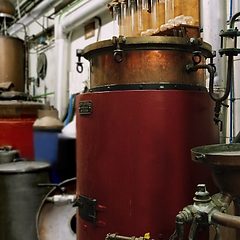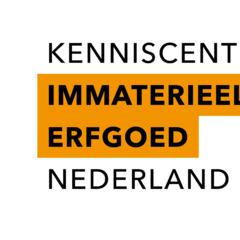In the distillery of the Jenever Museum in Schiedam, malt wine is produced according to the method from the late seventeenth century. The first action is to ‘malt’ barley in a maltery. The barley grains are then soaked in water to let them germinate. Within the barley grain enzymes develop, that saccharify the mash (amylase). The germinated barley, called green malt, is subsequently dried. Rye and barley malt are milled in Schiedam. A mash is made of rye flour, barley malt (sometimes maize), water and yeast. It is made at ‘saccharification temperature’, between 122 and 149 °F, and must be stirred for at least two and a half hour. When the mash has cooled down, yeast is added and the fermentation process begins. Yeast cells live off sugars and produce alcohol. After a few days an alcohol percentage of about 6 percent has evolved within the mash. The alcoholic mash is slowly warmed up to boiling point in a copper kettle (alembic). The boiling point of alcohol is lower than that of water, so the alcohol will evaporate first. The alcohol vapour that is released in the distillation process, precipitates in the cooling coil that runs through the cooling system to subsequently run to one of the floor barrels. This so-called ruwnat (low wine) is then distilled once more, producing a heavier wine, enkelnat (single wine) with 24 percent alcohol. After the third distillation it is bestnat or malt wine, with an alcohol percentage of 48 or more. In the Jenever Museum the malt wine is finally processed into malt wine jenever by adding extracts of the juniper berry.


